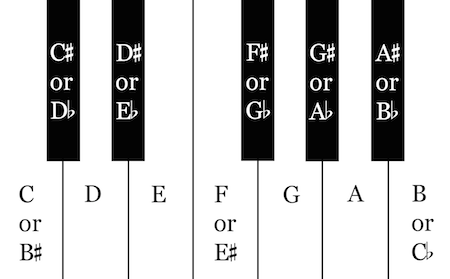Integrated Music Theory 2023-24
Discussion 1b - Labeling Pitches
Solfege Spiel
“What is the purpose of solfege?”
- To assign a one-syllable word to each note in a scale.
- It is extremely helpful for learning melodies and transposing to different keys.
“Why do some places use Fixed Do?”
- Fixed Do stems from a tradition of wanting to try to teach the concept of perfect pitch.
- Perfect pitch isn’t necessarily useful when performing because usually musicians aren’t playing in tune with A 440.
“Why don’t we have a lowered version of Do?”
- Western music is based around the dominant-tonic relationship, which uses tendency tones like Ti and Fa to center around a tonic.
Variations in solfege spelling:
- British Phonetic: Doh, Ray, Mee, Fah, Soh, Lah, Tee.
- Latin (used in this course): Do, Re, Mi, Fa, Sol, La, Ti.
Pitch Prattle
Pitch vs. Note
- A pitch is the physical frequency that we hear, a note is what we choose to name it.
“What’s the difference between C# and Db?”
- It depends on the scale you are using and the context of the harmony.
- A pitch class is a collection of all of the notes that sound the same but are spelled differently.
“Why does the Ab and G# pitch class have only two notes?”
- The black key on the keyboard has black notes on either side, making the natural half steps too far away to have three notes in the pitch class.
International Standards Organization (ISO)
- Standardizes units of measurement for all sorts of things.
- Hertz is vibrations per second. The standard for A4 is 440 hertz, or 440 vibrations per second accourding to the ISO.
“How does the ISO system work for note names?”
- Middle C is “C4”, just like the explosive! The lowest C on a piano is C1. The highest C on a piano is C8.
- Moving up the keyboard, the number increases each octave when you reach a C. So, a note’s number is equal to the nearest C below it.
- B4 and Cb5 might be enharmonically equivalent, but are labeled with different numbers in the ISO system.
Further Reading
From Open Music Theory
The Keyboard
The keyboard is great for helping you develop a visual, aural, and tactile understanding of music theory. On the illustration below, the pitch-class letter names are written on the keyboard.

Enharmonic equivalence
Notice that some of the keys have two names. When two pitch classes share a key on the keyboard, they are said to have enharmonic equivalence. Theoretically, each key could have several names (the note C could also be considered D♭♭, for instance), but it’s usually not necessary to know more than two enharmonic spellings.
Octave Designation
When specifying a particular pitch precisely, we also need to know the register. In fact, if all you have is C-sharp or B-flat, you do not have a pitch, you have a pitch-class. A pitch-class plus a register together designate a specific pitch.
We will follow the International Standards Organization (ISO) system for register designations. In that system, middle C (the first ledger line above the bass staff or the first ledger line below the treble staff) is C4. An octave higher than middle C is C5, and an octave lower than middle C is C3.
Here is the pitch C4 placed on the treble, bass, alto, and tenor clefs.

The tricky bit about this system is that the octave starts on C and ends on B. So an ascending scale from middle C contains the following pitch designations:

And a descending scale from middle C contains the following pitch designations:

Pitches on the alto staff are as follows:

Pitches on the tenor staff are as follows:
Any accidentals follow the octave designation of the natural pitch with the same generic name. Thus a half step below C4 is C-flat4 (even though it sounds the same as B3), and a half step above C4 is C-sharp4.
Note that a complete designation contains both the pitch-class name (a letter name plus an optional sharp or flat) and the register (the ISO number indicating the octave in which the pitch is found). Unless both are present, you do not have the full designation of a specific pitch.
